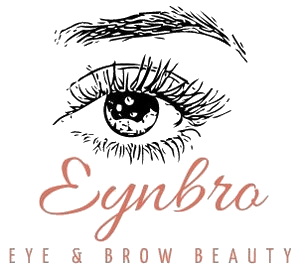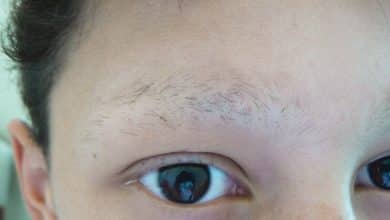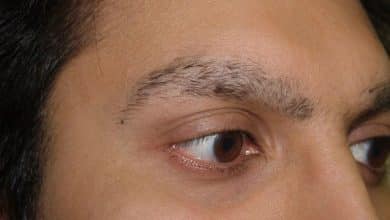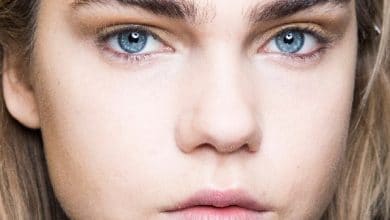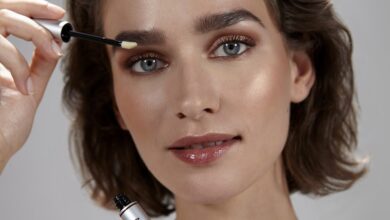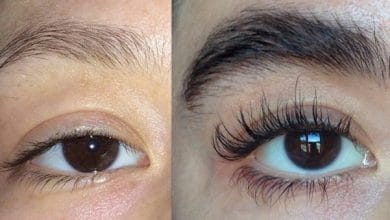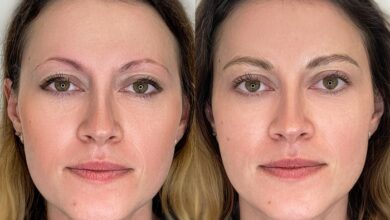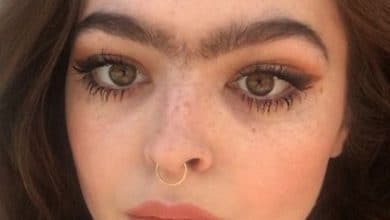Can ingrown eyebrow hair swollen eye?

An additional possible cause of pain under or near the eyebrow is sinusitis, or sinus infection. Sinusitis causes the sinus cavities to swell, making it difficult to breathe, and the nose may become blocked with mucus. The swelling and pressure can cause pain around the nose and eyes, where the nasal cavities are located. Sinus pain usually gets worse when you bend or move your head.
Sinusitis or sinus infection can be caused by bacteria, allergies or the common cold. Your doctor will be able to determine the cause and suggest a treatment plan.
An ingrown hair occurs when the hair strand grows downward instead of upward and gets stuck under the skin. Sometimes a cyst can develop. Ingrown hairs are usually not dangerous, but they can be very painful. If left untreated, an infection can worsen or spread to the bloodstream.
Swollen eyes usually go away on their own in a day or two. If it does not improve within 24 to 48 hours, see your ophthalmologist. He or she will ask you about your symptoms and examine your eye and eyelid. He or she will also look for clues about the cause of the swelling, such as skin changes or pain.
Does a hot shower help with swollen eyes?
Prendre une douche à l’eau très chaude peut augmenter l’apport de liquide et de sang au visage, ce qui peut vous donner l’air chaud, en sueur, rouge et bouffi. Une douche fraîche est idéale. Si vous avez besoin de températures élevées pour prendre une douche confortable, assurez-vous de terminer par un jet d’eau froide sur votre visage, ou offrez-vous un bain de glace.

Symptoms of ingrown hairs include:
- small red or pink bumps
- Small bumps with pus on top
- darkening of the skin
- Pain or tenderness
- Itching
- A visible hair stuck under the skin
Ingrown hairs can occur anywhere, but they are most common in areas where coarse, curly hair grows.
Hair removal strategies increase the risk of developing an ingrown hair. Shaving leaves the hair with a sharp edge, making it easier for it to pierce the skin. Tweezing, while better than shaving, often leaves a hair fragment behind.
How long does a swollen eyebrow last?
Your eyebrow may be swollen and bruised. It will take 5 to 7 days for the swelling to go down and 10 to 14 days for the bruising to fade. You may have trouble eating at first. If you have stitches, the doctor may need to remove them about a week after surgery.
It will probably take a few months to heal after the operation. Your face may look different than it did before your injury. Sometimes, further surgery is needed to make your eyebrow as close as possible to what it was before the injury.
When you can return to work depends on the injury you sustained and the type of work you do. You may be able to return to work in one to two weeks. This care sheet gives you a general idea of how long it will take you to recover. But everyone recovers at a different pace.
How do I reduce swelling under my eyebrows?
Most swelling under the eyebrows goes away in a few days. Here are some tips to help reduce swelling in the meantime:
- Wash or rinse. Try rinsing your eyes with water if the swelling is associated with discharge. Cold water is more soothing for allergies.
- Try a cold compress. Lie down and place a washcloth soaked in water over your eyes.
- Antihistamine eye drops for allergies. Use antihistamine eye drops – but only if you have allergies. With steroid drops, be careful not to use them inadvertently and only as prescribed. Steroid eye drops can be very effective when you have allergies; however, if used for another condition, they could actually harm you and cause blindness, always check with your doctor first.
- Remove contact lenses. If you wear contact lenses, remove them immediately if your eyes or eyelids become swollen.
How do you treat swollen eyebrows?
Apply ice or a cold pack wrapped in a clean, damp washcloth to the eye for 15 to 20 minutes at a time to reduce swelling and eyelid pain.
You can safely take an allergy medication or oral antihistamine. This will help reduce eyelid swelling and itching.
For eyelid swelling that interferes with your vision, use a long-acting vasoconstrictor eye drop (such as a tetrahydrozoline, like Visine). No prescription is needed. The recommended dose is one drop every eight to twelve hours, as needed, for one or two days.
How do you get rid of an ingrown hair in your eyebrow?
If leaving it in is not an option, there are other methods that can be tried. Hairs that have grown back into the follicle can be gently removed with a warm washcloth and a soft toothbrush.
After soaking a washcloth in warm water, apply it to the ingrown hair to warm and relax the pores and follicles. Rubbing the washcloth in a gentle circular motion can help loosen the hair.
If that doesn’t work, rubbing a very soft toothbrush in a similar motion over the area can help unclog the follicle and free the stuck hair.
How do you get out an ingrown hair you can’t see?
All the dermatologists we spoke with advise against plucking or pinching an ingrown hair, as this increases the risk of infection and is not a guaranteed way to remove the hair. Patience is a virtue when it comes to removing an ingrown hair; it’s best to take a few steps that will help the hair grow out on its own more quickly.
Start by applying a warm compress to the affected area, as the heat will soften the skin. Then, gently exfoliate the skin that is holding the hair in place. Run a clean soft-bristled washcloth or toothbrush over the area in a circular motion for several minutes. This removes dead skin cells, which helps the hair to emerge. You can also double this action with chemical exfoliation, using an ingrown hair treatment containing salicylic acid, a great ingredient for dissolving dead skin cells that would otherwise keep the ingrown hair under the skin longer.
Another important point: if you’re dealing with a very inflamed and painful ingrown hair bump, avoid tight clothing and synthetic fabrics. Nylon leggings, tight jeans and polyester underwear can rub against the skin, exacerbating the irritation.
Can you get ingrown eyebrow hairs?
If you see certain bumps on your eyebrow and you can’t identify them, I can tell you that they may be ingrown hairs. Well, ladies, these bumps or ingrown hairs can be found on your legs, underarms or any other place where they need to be shaved. Here’s how you can get rid of them.
1) Exfoliate regularly: Exfoliating gets rid of the dead skin cells surrounding the hair and helps get rid of ingrown hairs. Dead skin cells act as a barrier and do not allow the hair to emerge completely. Exfoliating the skin will help pull the hair out of the skin and remove ingrown hairs.
2) Shave in the opposite direction: Shaving in the opposite direction of the ingrown hair can help get rid of ingrown hairs.
3) Use anti-bacterial soaps: Sometimes the growth can get infected, so make sure you use antibacterial soaps to keep it clean. You can dab the area with hydrogen peroxide and remove the growth with tweezers.
4) Use acne medication: Sometimes your growth develops pus and looks a lot like a pimple. In this case, dab it with acne medicine to help it settle.
5) Use a good scrub: Use a good scrub that contains a moisturizer while bathing. Regular use of a body scrub will help you get rid of ingrown hairs. It also helps moisturize the skin to prevent further ingrowns.
